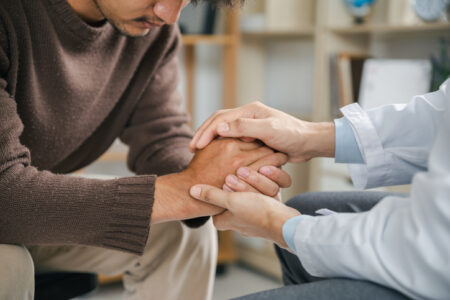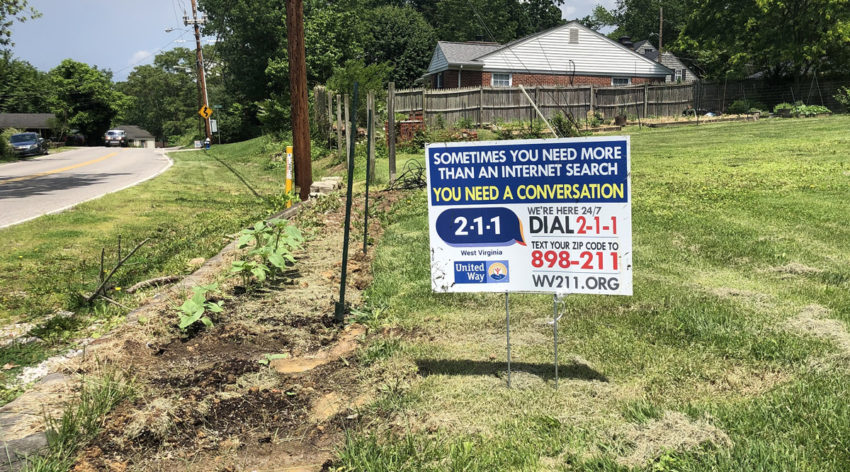
Share On Social!
As educators quickly adapted to virtual platforms to stay in academic contact with students after schools closed due to the coronavirus pandemic, many at-risk students were stranded in potentially unsafe, traumatic home situations.
How could schools, while closed, still check on child welfare and connect families to resources?
To answer this question, child advocates started brainstorming.
West Virginia, Massachusetts, and Oklahoma advocates launched a bi-weekly Brainstorming Group March 25, 2020, to share best practices, recommendations, and resources to help these kids. Soon, advocates joined from Ohio, Maryland, Florida, and Texas (including Salud America!).
The group generated four main recommendations:
1. Continue Sending ‘Handle With Care’ Notifications
Did you know that 83 U.S. cities/counties have a Handle With Care program?
For the program, police alert school leaders when they encounter a child at a traumatic scene, so schools are ready to monitor and support the student:
- Police send an email notification to schools when a child is a witness at the scene of an incident. No details about the incident are sent; only the child’s name, age, school, and the note to “Handle With Care.”
- Schools triage the notifications to relevant teachers and counselors. These leaders keep an eye on the student and prepare to offer trauma-sensitive support. This can include sending the student to the nurse’s office to sleep or to a counselor for support, instead of discipline.
- Mental healthcare providers partner with schools to provide on-site therapy, as needed.
When schools closed abruptly in March 2020 due to coronavirus, many educators and counselors wondered how to continue Handle With Care.
Those folks called Andrea Darr.
Darr, of the West Virginia Center for Children’s Justice, started the Brainstorming Group to help. They urged Handle With Care programs to continue sending notifications even school closures, so they could support at-risk students and families virtually.
Two West Virginia police departments made videos asking officers to continue sending Handle With Care notifications.
Some Texas schools adapted their Handle With Care program during school closures.
If you don’t have the Handle With Care program, you can start it! Download the free Salud America! “Handle With Care Action Pack,” which can help you begin even if school is closed.
2. Maintain Contact with Students and Families
Brainstorming Group advocates know the importance of educators and counselors maintaining contact with students, as these personnel are often the first line of defense when a family is in need.
Teachers and counselors usually have a good idea which students have difficult home lives and need the most support. These situations could worsen with coronavirus-related layoffs and shutdowns, food insecurity, substance use disorder, domestic violence, and child abuse.
Students can reach out to school staff when they need help by using “electronic student assistance referral forms.” But Wi-Fi is a problem for some families.
Some school districts used buses to set up Wi-Fi hotspots for households without internet. But school leaders knew that they could not rely on virtual contact alone to stay connected to their students. What could they do for more personal contact?
Food Distribution. As schools quickly adapted to closure by providing free curbside breakfast and lunches, food distribution turned out to be a good point of contact.

Teachers and counselors would use food distribution as an opportunity to get “eyes on” students and to pass out flyers with information about resources and services.
Some even passed out old cell phones so that families could at least call 911 if needed.
But not all schools required students to be present to pick up meals. This aimed to prevent virus spread, but it made it harder for school personnel to check on kids.
They had to adapt again.
Some schools used the Relationship Mapping Strategy to help ensure everyone has a strong connection to someone else during these challenging times.
Some counselors developed plans to continuously reach out to their high-risk students. For example, some gave a list of the kids they are most worried about to the probation resource officers (PROs) so they can go to their home for a “porch visit.”
Some counselors even worked with teachers get a list of students that had not logged in virtually each week.
Many set goals to contact every child weekly.
However, tracking virtual interactions was another way that school leaders had to adapt.
Student Tracker App. After a frustrating attempting to track virtual contacts between school personnel and students in excel spreadsheets, one school district in San Antonio developed an app using Microsoft Suite to track interactions with students.
Teachers, counselors, nurses, and principals can log and track interactions with students by mode, such as phone call, Google Classroom, Zoom, Skype, Classtag, and more.
The app has a dashboard with drilldown capabilities to display daily percent of student interactions by grade, campus, teacher, or counselor, as well as all students who haven’t been contacted.
While very helpful, there were still some students they couldn’t contact.
This was a problem across the country.
For example, up to half of kids in Southern California had no contact with schools.
Beyond continuously trying to contact students, how could schools ensure child knew spread the word about various resources and services?
Creating and Sharing Resources. Advocates in the Brainstorming Group worried about students and families that were isolated at home. They had no information about resources and services that could help them in a time of crisis.
But the resources exist.
In fact, the Zero Abuse Project created four personal safety videos to equip children of all ages with wellness and safety information and resources. Teachers could show these videos virtually or tell students about them. After all, most abusers are within the family.
Zero Abuse Project also developed a list of 25 tips for multi-disciplinary teams responding to child abuse during a pandemic.
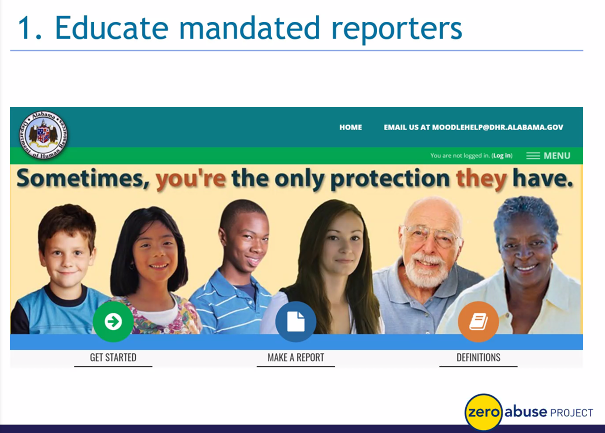 Many schools also compiled a list of these and other community resources on their website. Other schools printed resource lists to give when delivering school supplies and toiletries, hand out in food distributions, or when returning medications left in the nurse’s office.
Many schools also compiled a list of these and other community resources on their website. Other schools printed resource lists to give when delivering school supplies and toiletries, hand out in food distributions, or when returning medications left in the nurse’s office.
In one county in West Virginia, social workers teamed up with the local food pantry to deliver food boxes to high-risk students and establish contact with them and their family and share information about resources.
However, compiling a list of contact information for multiple community services and resources is burdensome.
3. Promote 2-1-1 Resources
The Brainstorming Group urges schools to maximize the use of 2-1-1.
Since 2000, people can call 2-1-1 and get community information and referral services. These include housing and utility assistance, sexual assault counseling, addiction prevention programs, help with food, diapers, and transportation, and more.
Additionally, 2-1-1 connects people to crisis hotlines, like National Suicide Prevention Lifeline and Teen Dating Abuse Helpline.
However, many families are not aware of this service.
When schools closed, one school district in San Antonio developed a foldable card the size of a business card with 2-1-1 information to be distributed with school meals, schools supplies and other methods. This was much easier than compiling a resource list of their own.
Similarly, a public health consultant in Oklahoma City, developed 2-1-1 informational posters and distributed them through lunch bags, yard signs, neighborhood alliance emails, and by targeting high-risk zip codes through the Post Office.
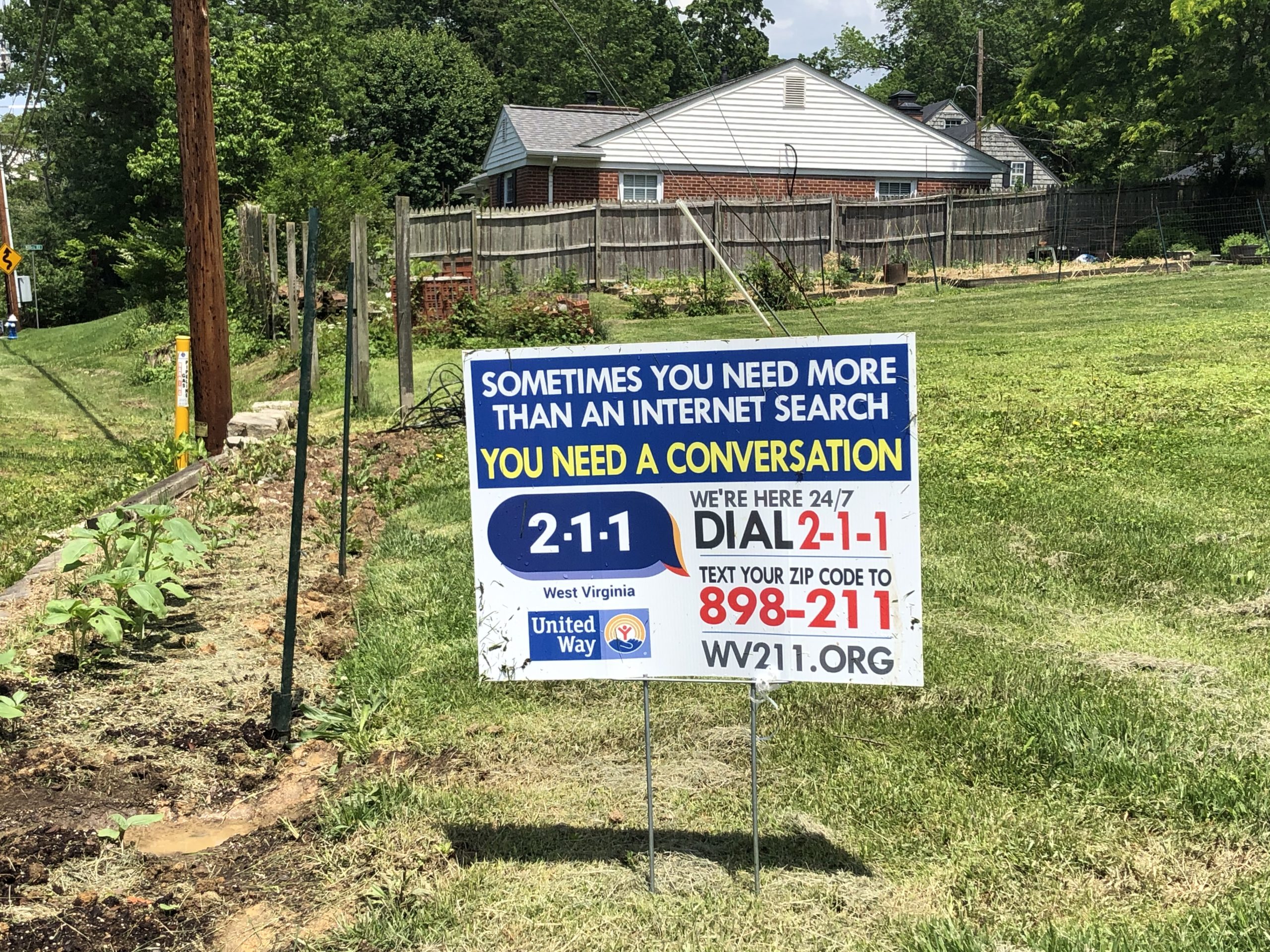 Soon 2-1-1 yard signs started popping in school districts across multiple states.
Soon 2-1-1 yard signs started popping in school districts across multiple states.
Schools would pass them out at food distribution sites.
Nonprofits and faith-based groups also posted the signs. Some even began including links to 2-1-1 in their newsletters and bulletins. They would mention 2-1-1 during meetings and sermons.
4. Engage More ‘Mandated Reporters’
The Brainstorming Group wanted to engage more community members in reporting child abuse.
These are called a “mandated reporter.” This person, because of his or her profession, is legally required to report any suspicion of child abuse or neglect to relevant authorities.
Professionals who encounter children as part of their occupation account for 67.3% of reports to child protective services nationwide. School personnel account for 20.5% of reports and social services personal account for 10.7%.
Due to school closures, these personnel no longer see children. Thus, they can’t report abuse.
In West Virginia, in late March 2020, CPS referrals were down 100 to 120 per day compared to their normal is 250-270 per day. Over the next two months referrals would continue to drop.
So the Brainstorming Group members in this state started training 2-1-1 operators to report if a child called in and self-reported abuse or neglect. They worked with the faith-based community to remind pastors that they are mandatory reporters and need to keep their eyes open.
Advocates in West Virginia created an information flyer with:
- signs and symptoms of abuse and neglect
- risk factors for families
- parental behavior red flags
- helpful information when reporting
- the phone number
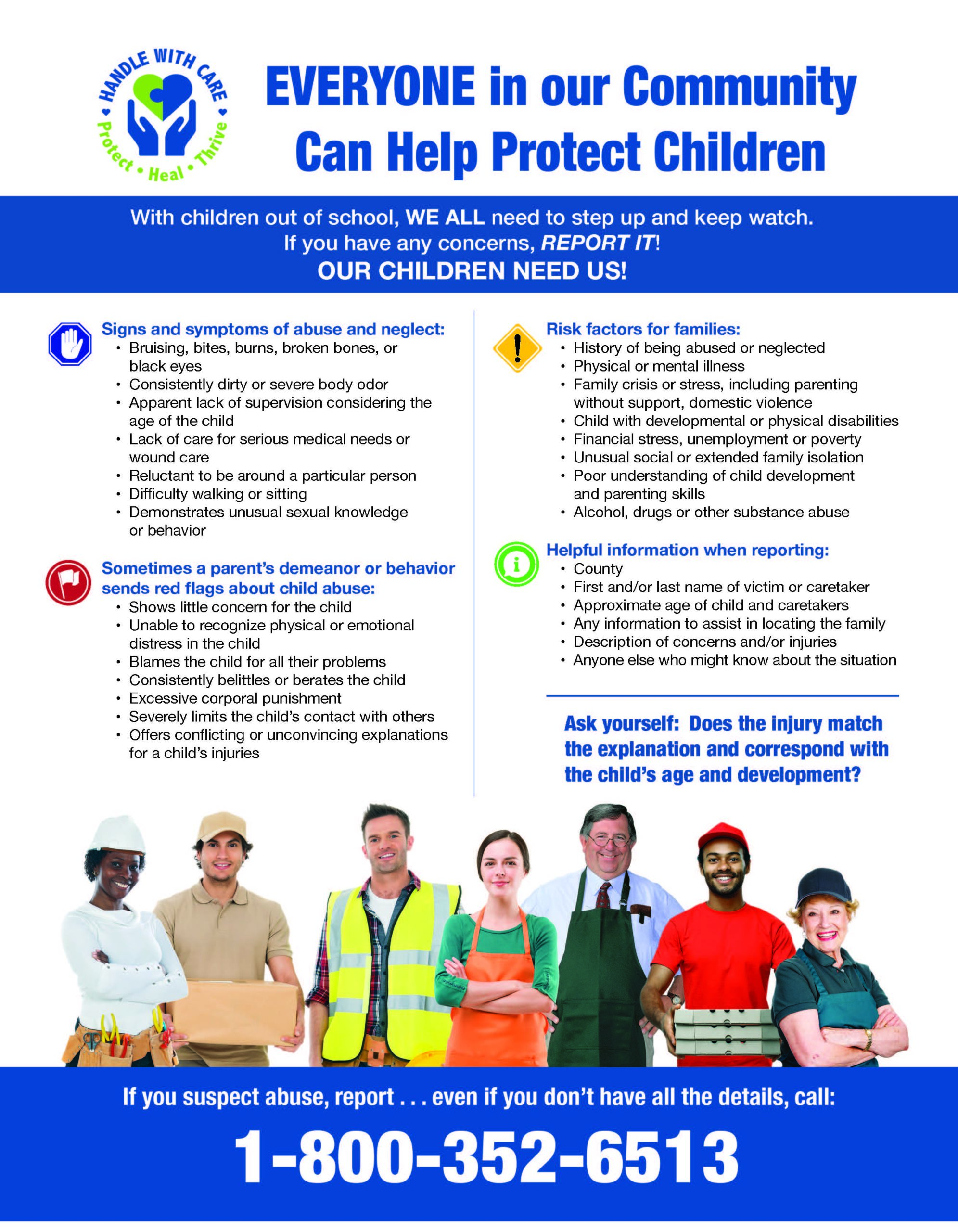 “With children out of school, we all need to step up and keep watch,” the flyer states. “Even if you don’t have all the details, call.”
“With children out of school, we all need to step up and keep watch,” the flyer states. “Even if you don’t have all the details, call.”
The group is talking about working with retail associations to distribute flyers to grocery stores and corner stores. They are also asking faith-based leaders to share the flyer.
Advocates in Florida slightly modified the flyer and began distributing it, too. They are even working with grocery retailer, Publix Super Markets, to distribute the flyers across their grocery stores.
Next Steps
The Brainstorming Group is also concerned about addressing online child exploitation.
Online child exploitation cases have exploded. Reports to the National Center for Missing and Exploited Children have more than doubled.
Over the summer, the Brainstorming Group will discuss how to best support students’ and teachers’ social-emotional needs when schools reopen.
 For example, knowing everyone has experienced some sort of trauma, the group is discussing trauma-sensitive school training for all school employees. They will also continue discussing transitioning children with special needs back to school.
For example, knowing everyone has experienced some sort of trauma, the group is discussing trauma-sensitive school training for all school employees. They will also continue discussing transitioning children with special needs back to school.
Keep an eye out for updates on the annual Handle With Care conference, which will be spread out over 45 Wednesdays starting in August. Each 75-minute session will cost $10 and will provide continuing education units (CEUs).
Share these resources with school leaders and child advocates in your community. You could even start a similar brainstorming group in your community.
More About the Handle With Care Brainstorming Group
When Darr first organized the Brainstorming Group’s first virtual meeting back in March, advocates got a chance to discuss all these school-closure concerns and talk through potential solutions.
Since then, they’ve met twice a month.
Brainstorming Group members include representatives from West Virginia State Police Crimes Against Children Unit, West Virginia Bureau for Children and Families, West Virginia Supreme Court of Appeals, United Methodist Church, West Virginia University School of Public Health, West Virginia Healthy Grandfamilies, Massachusetts Office of the Child Advocate, Florida Department of Health, Zero Abuse Project, Harmony Mental Health, THINK Kids, Communities in Schools, Salud America! at UT Health San Antonio, multiple school districts, and Handle With Care coordinators from Massachusetts, Oklahoma, Ohio, and Maryland.
Here are some notes from group meetings:
If you want to learn more, please contact us at merck@uthscsa.edu.
By The Numbers
142
Percent
Expected rise in Latino cancer cases in coming years

